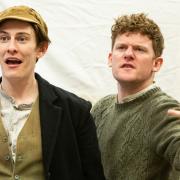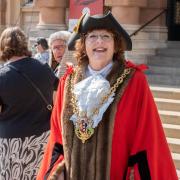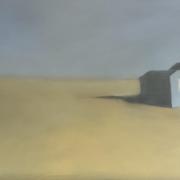Scores of airfields that played a vital role in defending Britain during wartime now lay abandoned across Suffolk, a glimpse of the past...lest we should ever forget. Writer Melissa Harrison and photographer Richard Allenby-Pratt visit the ghost airfields.
They’re as much a part of our countryside as its acres of wheat and barley, pargetted farmhouses and glinting horse ponds - the long, straight marks left by the old airfields that once crowded this level and usefully positioned county.

On moving to Suffolk some years ago, I spent hours poring over Ordnance Survey maps, connecting one village to another and trying to form a picture of my new home in my imagination.
The ghost runways were impossible to miss, carving out long sections of forest or almost concealed beneath arable land, all set on roughly the same east-north-east axis to take advantage of the prevailing wind.
Newmarket, Lakenheath, Mildenhall, Tuddenham, Halesworth, Eye and many others, each one a reminder that the past is still with us and that the marks our generation leaves on the landscape will also remain legible to those who come next.

Suffolk was home to no fewer than 32 military air bases during the Second World War, the majority of which had been constructed during wartime and many others during the febrile years that led up to the outbreak of hostilities in 1939.
East Anglia became known as ‘little America’. Between December 1941 and May 1945, over 400,000 US airmen were stationed in England, most of them in our region. Ten per cent would never return home.
READ: The ill-fated American B17 bomber that crashed in the village of Redlingfield
And the US presence continued here into the 1950s as the Cold War took hold – most particularly at Bentwaters near Woodbridge and Lakenheath near Mildenhall.
One of the best-loved inhabitants of the first Suffolk village I settled in was an American who had been stationed here in the 50s; he fell in love – both with his sweetheart and with the county – and had decided to stay on.

For just as the US air force left its mark on Suffolk, so Suffolk left its mark on many thousands of men.
John T. Appleby was a journalist from Arkansas who enlisted and served as a trainer in celestial navigation for the Eighth Air Force, arriving at RAF Lavenham not long before the end of the War.
His luminous memoir of his short time here, Suffolk Summer, teems with rich descriptions of the county as seen through a stranger’s eyes.
In the opening chapter, he waxes lyrical about our green grass, our patchwork fields and hedgerows “thick with hawthorn and wild roses, with crab-apples and holly and wild plums, so that in spring the fields are bounded by walls of blossoms…”. Who could disagree with him when he assures readers that “the English landscape at its subtlest and loveliest is to be seen in the County of Suffolk… the people of Suffolk themselves tell me this, and I know it must be so”?


The airfields themselves, of course, were never so bucolic; vast concrete runways with miles of access roads, control towers, Nissen huts, tarmac perimeter tracks and utilitarian brick buildings for use as mess halls, gymnasiums and accommodation blocks.
Many sites have now been largely broken up and returned to agricultural use; in some cases, as at Bentwaters, the old wartime sites have become thriving commercial and industrial estates.
Here and there, history lives on, as at Parham, near Framlingham, where the 390th Bomb Group Memorial Air Museum and the Museum of the British Resistance Organisation share a lovingly restored site at the old control tower, providing a precious glimpse of a past we must not forget.



But it’s the derelict sites that move me most, the places where rippling acres of barley border once-busy access roads, where wildflowers struggle through the cracked concrete and skylarks sing in place of the heavy bombers that once roared up and away. They are ‘thin places’, shimmering with the past yet entirely at peace with the present; scars on the Suffolk soil that will never entirely be erased.
You can find detailed information about almost all of Suffolk’s military bases in Ghost Fields of Suffolk: History, Plans and Photographed Remains of 28 Suffolk Airfields by Roderick Mackenzie, published in 2012 by The Lark’s Press.
Melissa Harrison’s most recent novel, All Among the Barley, is set on a Suffolk arable farm in the run-up to World War II. The Stubborn Light of Things: A Nature Diary is out now in paperback. melissaharrison.co.uk
You can see more of Richard Allenby-Pratt's work at thesuffolkproject.co.uk
SUBSCRIBE: Get Suffolk magazine every month and discover more of the county's heritage



























